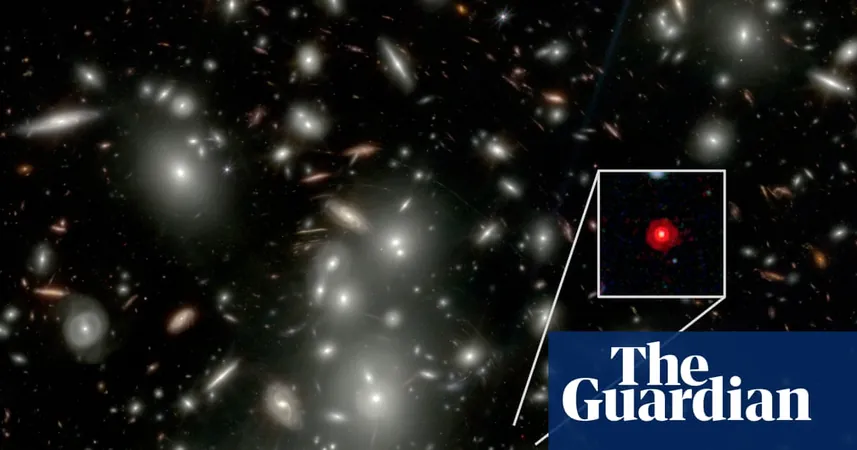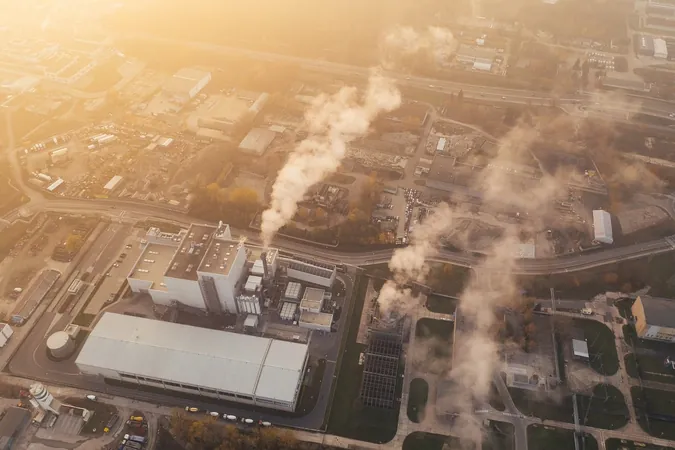
Mind-Blowing Discovery: Ancient Black Hole Could Change Everything We Know About the Universe!
2025-09-02
Author: Mei
A Cosmic Game-Changer?
Hold on to your telescopes! The James Webb Space Telescope has made a groundbreaking discovery: an ancient, “nearly naked” black hole that may have formed just seconds after the Big Bang.
Rethinking Black Hole Origins
This amazing find challenges everything scientists thought they knew about the universe's formation. The prevalent theory has always been that black holes emerged only after the first stars ran out of fuel and collapsed. But the latest observations suggest this gargantuan black hole formed entirely independent of any surrounding galaxy.
What Are Primordial Black Holes?
Enter the primordial black hole: a theoretical construct proposed by the legendary Stephen Hawking. These intriguing cosmic entities might have been born from dense, hot areas collapsing mere moments after the Big Bang, acting as gravitational anchors around which stars and galaxies cluster.
Until now, they remained speculative, with no observable evidence—until now!
Discovering QSO1: The Little Red Dot
The spotlight shines on a tiny red dot, known as QSO1, dating back over 13 billion years to when the universe was just a mere 700 million years old. This bright, compact entity raises eyebrows among astronomers—could it be an ancient supermassive black hole?
Typically, black holes start small and grow by consuming stars, so how did QSO1 become so massive so early in the cosmic timeline?
Massive Findings!
Despite being light-years away, astronomers managed to monitor the orbital speed of gas and dust swirling around QSO1. They estimated its central black hole to have a staggering mass of 50 million solar masses, with much less material surrounding it. This is drastically different from what we observe in our own Milky Way, where black holes are about a thousand times less massive than their host galaxies.
Pristine Chemistry Adds More Mystery
Further analysis revealed that the surrounding material is almost “pristine,” made up predominantly of hydrogen and helium—the elemental remnants from the Big Bang. The absence of heavier elements hammers home the potential absence of significant star formation in the vicinity.
The Paradigm Shift
Prof. Roberto Maiolino from Cambridge, part of the groundbreaking research team, says, “These results represent a paradigm change. We’re witnessing a massive black hole form without much of a galaxy around it.”
What Comes Next?
Another possibility suggests that a huge cloud of gas and dust may have collapsed directly into the black hole, skipping star formation altogether. But this “direct collapse” scenario requires unlikely conditions that aren’t supported by recent data, hence the preference for the primordial black hole theory.
Prof. Andrew Pontzen, a cosmist who was not part of the team, remarked on the far-reaching implications: “A confirmed primordial origin for black holes would reshuffle our understanding of fundamental laws of physics.”
The Future of Cosmic Research
The researchers are building a case for the primordial scenario, though it remains an indirect argument. Expect the debate to continue, but mark your calendars! In a decade, the next generation of gravitational wave detectors could provide more insights into this celestial mystery, potentially confirming or refuting the primordial black hole theory once and for all.





 Brasil (PT)
Brasil (PT)
 Canada (EN)
Canada (EN)
 Chile (ES)
Chile (ES)
 Česko (CS)
Česko (CS)
 대한민국 (KO)
대한민국 (KO)
 España (ES)
España (ES)
 France (FR)
France (FR)
 Hong Kong (EN)
Hong Kong (EN)
 Italia (IT)
Italia (IT)
 日本 (JA)
日本 (JA)
 Magyarország (HU)
Magyarország (HU)
 Norge (NO)
Norge (NO)
 Polska (PL)
Polska (PL)
 Schweiz (DE)
Schweiz (DE)
 Singapore (EN)
Singapore (EN)
 Sverige (SV)
Sverige (SV)
 Suomi (FI)
Suomi (FI)
 Türkiye (TR)
Türkiye (TR)
 الإمارات العربية المتحدة (AR)
الإمارات العربية المتحدة (AR)